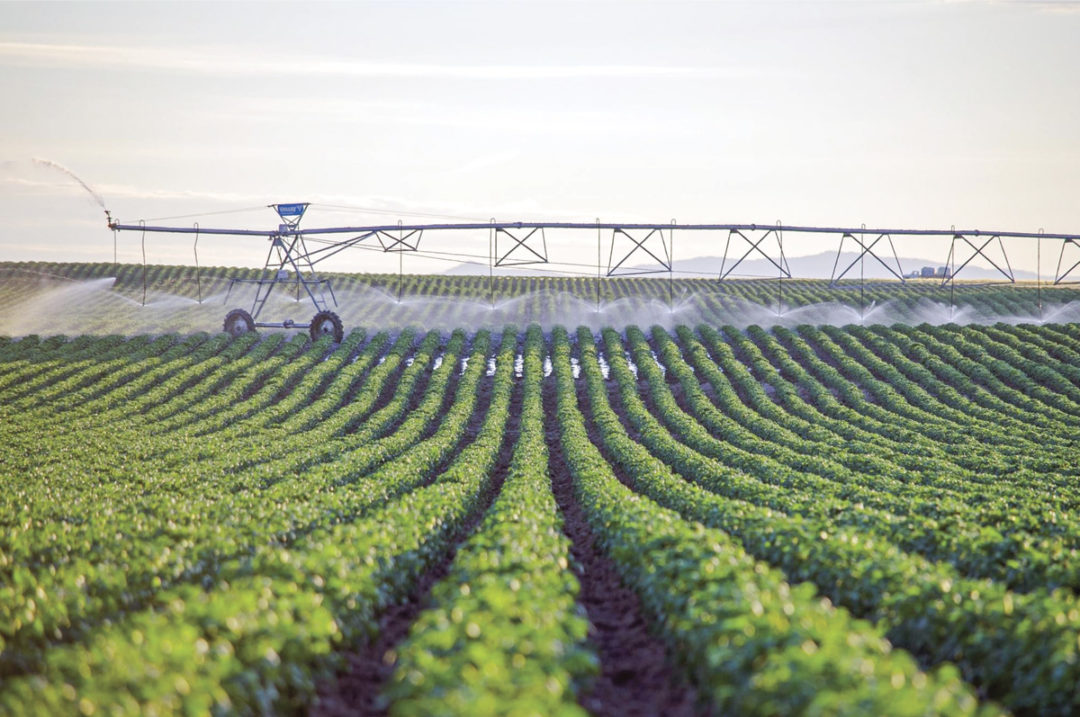The interstates and back roads of southeastern Idaho pass through a carpet of farmland, unrolling in all directions. Tall irrigation pivots pump water out across the broad expanses of leafy green potato plants, the lifeblood of the state’s economy. But in recent summers, hotter, drier weather has diminished the water supply that feeds these devices.
Idaho National Laboratory (INL) scientists explore key issues such as water supply and extreme weather events, like drought, through the laboratory’s energy and environmental research efforts. Now, a team from the lab is collaborating with Mickelsen Farms, a large family-owned potato farm in Roberts, Idaho, to develop software solutions that can support farms in drought conditions.
“Mickelsen Farms had a system in place that collected irrigation data,” said Damon Hartley, INL’s operations research analysis lead for the project. “We worked with them to augment this system’s capabilities with the goal of eventually deploying it across other regional farms.”
Mickelsen Farms has been focused for some time on water efficiency. “We want to make sure, especially in seasons of drought, that we are making every drop count,” said Andrew Mickelsen, the farm’s manager.
 Mickelsen Farms has been focused for some time on water efficiency. Photo courtesy of INL.
Mickelsen Farms has been focused for some time on water efficiency. Photo courtesy of INL.
Many area farmers have operating telemetry units on their irrigation pivots that provide readings of how much water they are using. However, visualizing the data from these units is much more challenging. That’s where INL comes into the picture.
Through INL’s Technical Assistance Program, Hartley and his team worked with the pivot provider to develop an application programming interface that accesses the data from a farm’s telemetry unit. Farmers can then use the data to compare water application rates to their needs based on real-time environmental conditions. The software also provides more comprehensive information at the pivot, field and farm levels that will help farmers manage water use more effectively.
Most farms have allotments each year to mitigate water scarcity, and the software will allow farmers to track how their use is progressing toward that allotment to ensure they do not run out of water. It also allows them to see areas in their irrigation circle that might be outliers, either for over- or underproducing water. In vast spaces like Mickelsen Farms, identifying these outliers electronically will also save significant time and manpower.
Additionally, the software can compile aggregated data highlighting water use over time. “Water usage is obviously different in different seasons and for different crops,” said Hartley. “Understanding how water usage changes in the spring versus the summer, or for wheat versus potatoes, will give the farmers more data to work with as they plan for water use changes throughout the year.”
 This software will manage farm water supply in conditions of downpours and droughts. Photo courtesy of INL.
This software will manage farm water supply in conditions of downpours and droughts. Photo courtesy of INL.
The next step is to refine the software with INL’s technology transfer team and professional software developers. This will include polishing the current prototype Hartley and his team have developed and adding functionality and robustness.
“Our work with INL has allowed us to better understand data we had already been gathering,” Mickelsen said. “But for other farms in the area, this concept of comprehensive electronic water data collection is new and could be a total game changer. We are hoping to see it scaled up so it can be used statewide and ultimately, nationwide.”
“We hope this software will help everyone in rural, farm-focused communities,” said Hartley. “Currently, farmers get first right of refusal for water in the area. Freeing up water by managing it more effectively will result in more water for everyone else.”
About Idaho National Laboratory: Battelle Energy Alliance manages INL for the U.S. Department of Energy’s (DOE) Office of Nuclear Energy. INL is the nation’s center for nuclear energy research and development, and also performs research in each of the DOE’s strategic goal areas: energy, national security, science and the environment. For more information, visit the INL website. Follow INL on social media: Twitter, Facebook, Instagram and LinkedIn.
This article was written by Michelle Goff, INL communications, and has been reprinted by permission. It originally appeared on the Idaho National Laboratory website.







